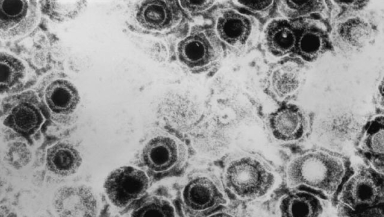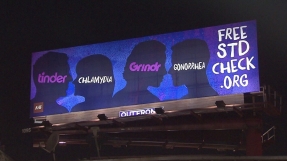
This may come as a surprise, but it is true: More than 3.7 billion people under the age of 50—equivalent to two-thirds of the world's population—are infected with the herpes simplex virus type 1 (HSV-1).
For the first time, the World Health Organisation (WHO) came out this week with an estimate of the global prevalence of the herpes virus, which causes cold sores and genital lesions.
The HPV-1 or oral herpes can be contracted through oral secretions or sores on the skin, particularly through kissing and sharing objects such as kitchen utensils and toothbrush.
The herpes simplex virus type 2 (HPV-2), which causes genital herpes, can meanwhile be transmitted through sexual contact with someone who has the virus. According to the WHO, another 417 million people around the world have this virus.
The WHO noted that both types of herpes virus are "highly infectious and incurable."
The organisation also pointed out that these figures reveal increasing sexual activity especially among the youth in developed countries.
The WHO estimates that around 140 million people aged 15 to 49 years "are infected with genital HSV-1 infection, primarily in the Americas, Europe and Western Pacific."
This geographic trend means that the herpes virus is being transmitted not due to poor hygiene or living conditions, but through engaging in oral sex.
Dr. Marleen Temmerman, director of WHO's Department of Reproductive Health and Research, said educating the youth about sexually transmitted diseases is all the more important nowadays.
"Access to education and information on both types of herpes and sexually transmitted infections is critical to protect young people's health before they become sexually active," Temmerman said in a statement posted on the WHO website.
He added that countries around the world also have to "improve data collection for both HSV types and sexually transmitted infections in general."
The Centers for Disease Control and Prevention (CDC) said most people who have herpes have no, or very mild symptoms. "You may not notice mild symptoms or you may mistake them for another skin condition, such as a pimple or ingrown hair. Because of this, most people who have herpes do not know it," the CDC said.
It describes how the infection looks like: "Genital herpes sores usually appear as one or more blisters on or around the genitals, rectum or mouth. The blisters break and leave painful sores that may take weeks to heal. These symptoms are sometimes called 'having an outbreak.' The first time someone has an outbreak they may also have flu-like symptoms such as fever, body aches, or swollen glands.
"Repeat outbreaks of genital herpes are common, especially during the first year after infection. Repeat outbreaks are usually shorter and less severe than the first outbreak. Although the infection can stay in the body for the rest of your life, the number of outbreaks tends to decrease over a period of years."















